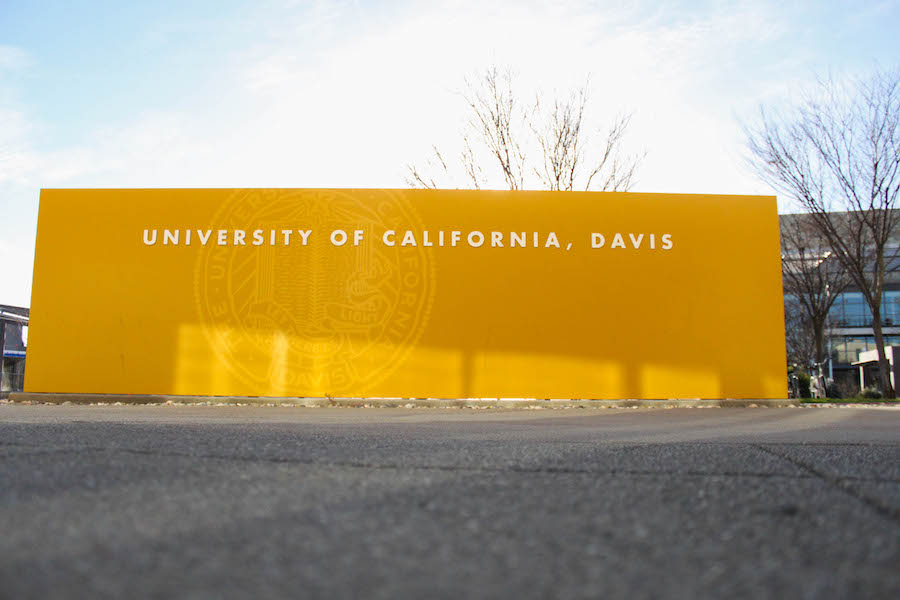
UC Davis researchers target carbohydrates to promote microbiota growth
Microorganisms inside the body outnumber our human cells 10 to 1. Microbes often receive a bad reputation for making us sick, but our bodies would not be able to function properly without them. This is especially apparent in the digestive tract.
Human cells can’t process certain complex carbohydrates like fibers, so we host a plethora of bacteria and other microbiota in our intestines that can. These symbiotic hitchhikers provide essential metabolic processes that let us properly digest and uptake nutrients.
Our gut flora is influenced by our diets and environment, and while most of these microbes are beneficial, research suggests that some types of gut flora have ties to malnutrition and premature infant development. UC Davis researchers are studying these gut bacteria with the hope of clinical application.
Dr. David Mills is a professor in the Department of Food Science and Technology. His laboratory is focused on how specific sugars in human breast milk ‘farm’ the bacteria in a baby’s gut and promote growth of the right species.
Bacterial farming takes advantage of a bacteria’s specialized oligosaccharide (complex carbohydrate) diet, allowing researchers to specifically feed and promote beneficial bacteria while starving the deleterious strains.
In March of 2015, a study co-authored by Mills came out in the journal Cell. The study focused on Malawian identical twins, one with kwashiorkor (a severe manifestation of undernourishment, often recognizable by a distended belly) and one without.
“It turns out that this was related to the microbes of the kids, because obviously the twins have the same genetics,” Mills said. “It really is related to the unfortunate set of microbes that [got] inside one kid versus another.”
To determine how best to help the children, microbes from each twin were put into pre-sterilized, microbe free mice. The mice began exhibiting symptoms similar to those experienced with kwashiorkor. Researchers were then able to test the microbes by feeding the mice diets that promoted different types of microbes.
“We added some of the components from human milk that we knew helped ‘farm the right microbes’ shall we say. So they helped guide and encourage the good microbes. So in doing this, we had to get these components, and they’re not so easy to get from human milk because we needed them at scale. We needed kilograms of [carbohydrates],” Mills said.
Dr. Daniela Barile is an associate professor of food science and technology at UC Davis. Her research is focused on finding an alternative source for oligosaccharide manufacturing on a large scale.
“Because these oligosaccharides have very complex structures … biotechnology [is] not yet able to create the molecules in the lab. They can only create two or three out of [the] hundreds that are in human milk. And so that’s why we need to extract them from [animal] milk,” Barile said. “Right now, we’re doing this bioinformatics catalogue of all the milks that we can get … so that we can hope to understand the synthesis of these molecules.”
The Barile lab has tested a wide assortment of mammal milk, including pig, goat, mouse, and sheep milk. Cow milk in particular has been promising, partially because of the oligosaccharides it naturally has, and partially because of how easy it is to come by. For this reason, the Barile lab has partnered with Hillmar Cheese Company.
“We were lucky because [the oligosaccharides] are quite small molecules and they were escaping each filter,” Barile said. “[They are] not captured with the cheese, they’re not captured with the cream, they’re not captured with the protein, and they end up in this waste product. So that was a great news for us, because there are still millions of metric tons of the waste product that now we can harvest.”
This cheese byproduct, or cheese whey, has a higher concentration of oligosaccharides than milk alone. Because cheese whey is a waste product that manufactures usually have to pay to dispose of, it’s also cost efficient.
“Without companies believing in what UC Davis is doing, we could not be publishing in Cell,” Barile said. “It’s really important to get out the message that you can isolate the complex sugars from a dairy cow, and these complex sugars are similar to human milk and they may help reverse the problems of malnutrition.”
One application of this research is in helping prematurely born babies who did not have sufficient time to build up the proper microbiota.
“[My] research has been focused on preventing disease in premature babies that involves their intestines. So we give premature babies … live bacteria to try and prevent infection,” said Dr. Mark Underwood, chief of pediatric neonatology at UC Davis Medical Center.
Underwood treats premature babies and newborns with illness and infection. While the babies in the hospital are receiving the oligosaccharides that they need from their mothers’ breast milk, their gut biomes are still extremely sensitive to external microbes. Live bacteria, along with the right oligosaccharides from breast milk, introduce good bacteria to the baby’s gut and provide the nutrients for the right microbiota to establish and flourish.
“If a baby is getting his mom’s milk, that provides him with the sugar molecules he needs. Then the question is, does he need the bacteria as well? And it looks like the answer to that is probably yes,” Underwood said.
The research being done by UC Davis faculty on microbiota intersects human biology, food science and human health; a combination hard to replicate elsewhere.
“The beauty of being at UC Davis is that we have the analytical lab, we work with large companies that can scale up our ideas, and then [we] do the clinical translation right here so you can monitor [the results],” Barile said.
Written by: Meral Basit – science@theaggie.org




